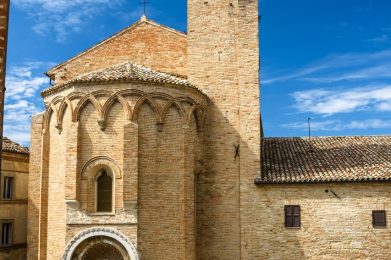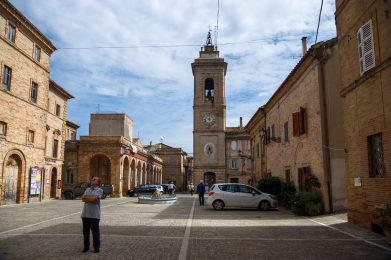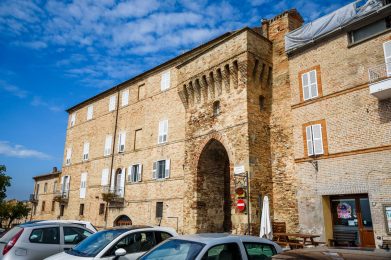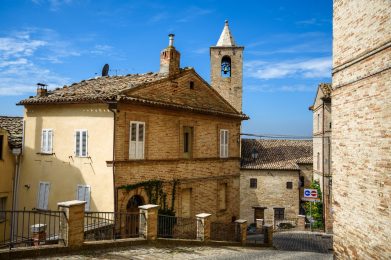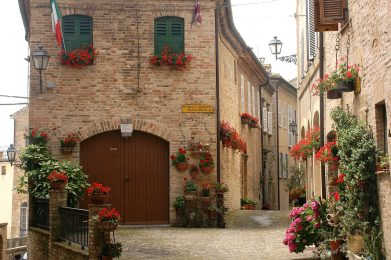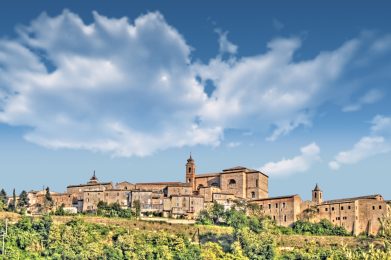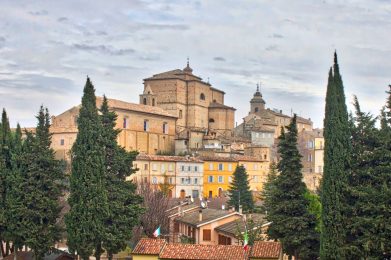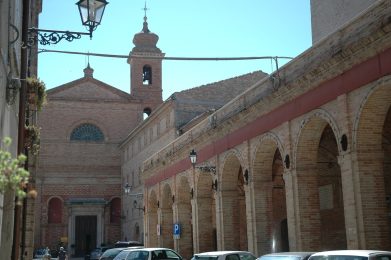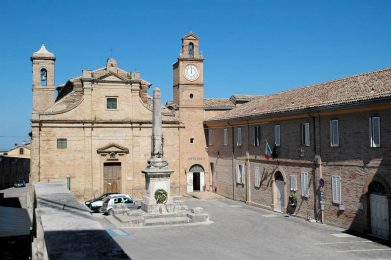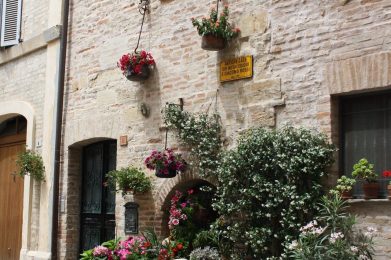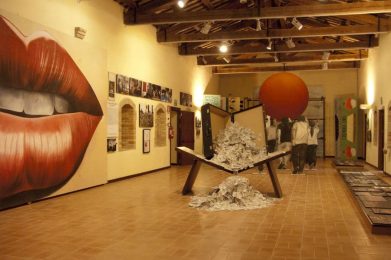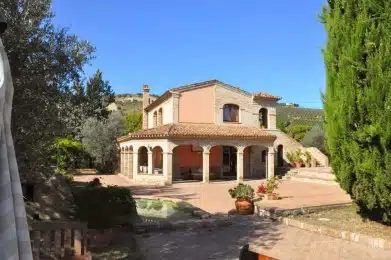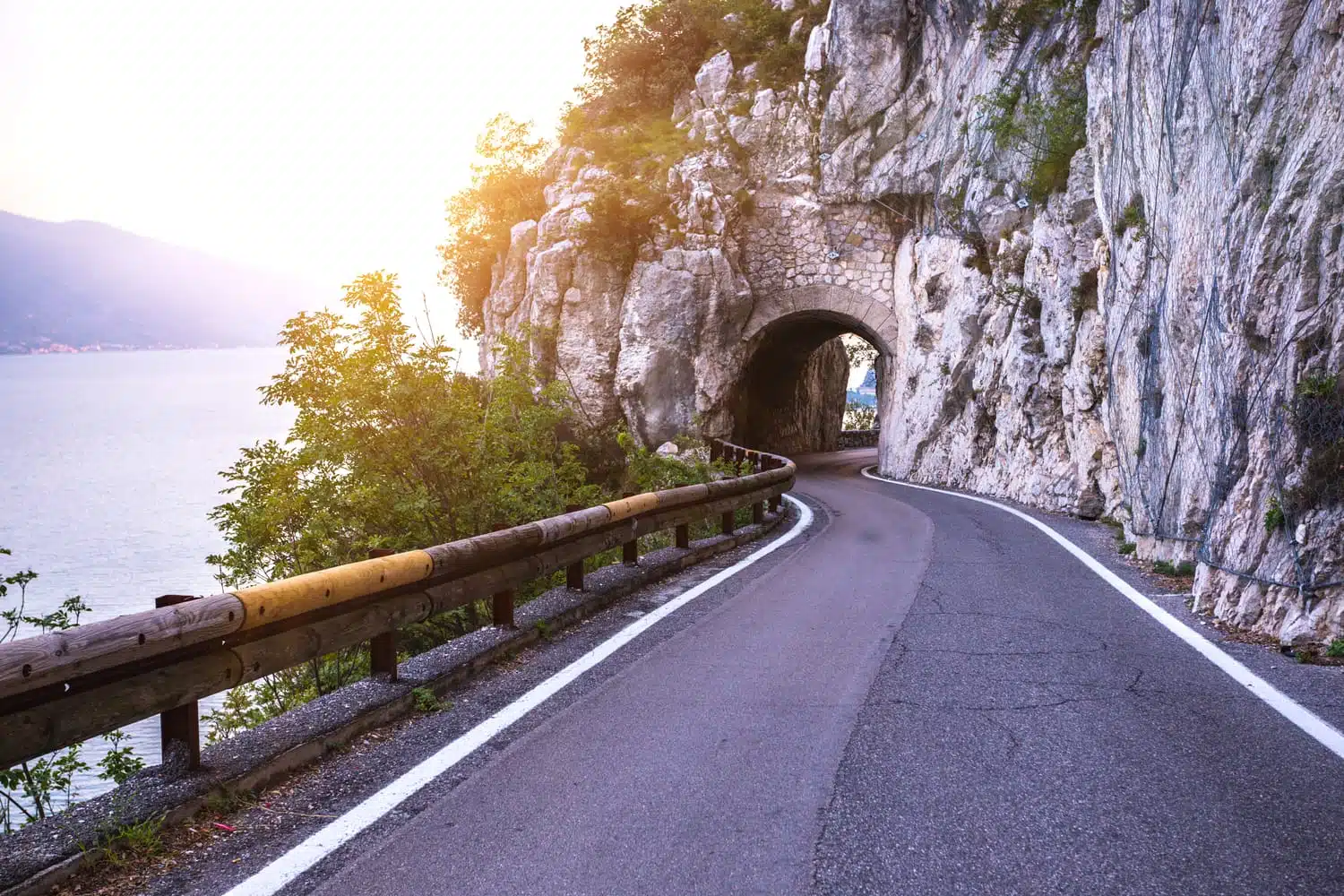Perched on a ridge overlooking the Aso and Menocchia valleys, Montefiore dell'Aso is one of the most charming villages in the Piceno region, rightfully included among The Most Beautiful Villages in Italy. Located in the Marche hinterland, it looks like a typical medieval fortified village, with an elliptical structure enclosed by a still well-preserved city wall, embellished by six towers and two ancient gates dating back to the 14th-16th centuries.
Origins and history
The history of the village is rooted in ancient times: archaeological finds testify to settlements since prehistoric times, consolidated during the Roman period, as indicated by necropolis and agricultural centuriations. The name "Montefiore" seems to derive from the cult of the goddess Flora, symbol of fertility and protector of the countryside. In the Middle Ages, the inhabitants moved to the heights to defend themselves from invasions, founding the two castles of Montefiore and Aspromonte, which in 1178 merged into a single free commune.
Historical center and monuments
Walking through the streets of Montefiore is like entering an open-air history book. The recommended entrance is from the Belvedere De Carolis, which leads to the historic center. Piazza della Repubblica welcomes visitors with its neoclassical elegance, dominated by the Collegiate Church of Santa Lucia, rebuilt in the 18th century but founded as early as the 15th century. The interior contains frescoes by painter Luigi Fontana, an 18th-century reliquary and rich coffered decoration.
Not far away, in Piazzale San Francesco, is one of the village's most important monumental complexes: the Church and Convent of San Francesco, built between 1247 and 1303. Today they house the Polo Museale di San Francesco, an articulated and evocative cultural itinerary that welcomes:
-the Carlo Crivelli Hall, with the famous polyptych by the Venetian master;
-the Adolfo De Carolis Museum, dedicated to the famous Montefioran artist;
-the Museum of Peasant Civilization, a witness to local rural traditions;
-the Domenico Cantatore Collection;
-the Giancarlo Basili Scenographic Documentation Center, a tribute to the great Italian set designer.
Civil and religious architecture
The village is also rich in noble palaces from the seventeenth to eighteenth centuries, such as Palazzo Egidi, Palazzo De Vecchis and Palazzo Vitali, a sign of the prosperity achieved in the modern period. Also special is Casa Simonetti, adjacent to the town wall, and the Casa dei notai Rossi, one of the oldest. Outside the center are several rural churches, including Santa Maria delle Grazie, Santa Maria della Fede, and San Giovanni Battista.
Events and traditions
Montefiore dell'Aso maintains an intense cultural and social life. Among the most significant events: The Carnival (February), with parades and traditional masks; Sinfonie di Cinema (July), a film festival with live concerts; The Palio delle Botti (August), a folkloric competition among the town's districts; The International Polyphonic Review (autumn), which attracts choirs from all over the world.
Atmosphere and advice
Walking around the village is a relaxing and atmospheric experience. The cobbled alleys, flowery stairways, and breathtaking views between buildings create an atmosphere out of time. Also recommended is a walk along the outer path that runs along the walls, to admire the Porta Nuova, Porta Canapale and the ancient towers.
Montefiore dell'Aso is much more than a picture-postcard village: it is a place that holds beauty, art, memory and an authenticity of the Marche region all waiting to be discovered.


